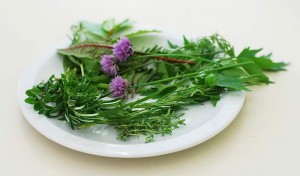 What does wintertime mean to you? Is it visions of snowflakes and icicles, school closed by snow storms, or hours and hours filled with sledding and outdoor play?
What does wintertime mean to you? Is it visions of snowflakes and icicles, school closed by snow storms, or hours and hours filled with sledding and outdoor play?
Those visions seem to me more like the winters of childhood. Now as an adult it can mean harder work caring for livestock, dangerous surfaces that I risk falling on, long dark days and evenings being stuck indoors.
For some, these long winter days can set off a true state of depression, one that is triggered by the change in the amount of natural light we get in winter and in some people, the curtailment of being able to get outdoors and exercise. This depression is known in the medical field as Seasonal Affective Disorder (SAD). As many as half a million people in the United States may have winter depression, and it is more common in women than in men. But you don’t have to dread the dawning of winter. There are many things you can do that can help to improve your symptoms. Please remember – these are only suggestions. Please consult your family physician or a specialist on any depression or other medical treatments.
FIND LIGHT
The most common treatment is increasing your exposure to light. This can be as easy as spending more time outdoors, sitting closer to bright windows while at home or in the office, or spending 10 to 15 minutes in a tanning bed. This treatment, known as “light therapy,” mimics outdoor light and causes a biochemical change in your brain that lifts your mood, relieving the symptoms of SAD. Since the beginning of time, people have realized the healing power of light. We feel rejuvenated when we’re in sunshine and we literally whither in the dark.
In the early 1980s, researchers discovered that light therapy was the most effective treatment for winter depression. It turns out that light is more than psychological. Light actually produces hormones and neurotransmitters that physically affect our mood and well being. One of these hormones, serotonin, is thought to be a major factor in depression. One recent study done in the effects of light therapy showed that bright light significantly increased serotonin levels, while dark or cloudy days caused serotonin to plummet.
ADJUST YOUR DIET
 Certain foods can also help improve your symptoms of winter depression. Scientists have discovered that 15-38% of people with depression have low levels of foliate, or folic acid, and those with the lowest levels tend to be the most depressed. That’s another good reason to eat dark green leafy vegetables, lentils, kidney beans, orange juice and folic acid-enriched cereals and breads. Foliate, a B vitamin, must be consumed each day because the body does not store it. Some studies suggest that low levels of selenium are also linked to depression. Tobacco use and alcohol deplete selenium and the mineral is destroyed in foods that are processed or refined. Wheat germ, garlic, fish, shellfish, whole grains, sunflower seeds and Brazil nuts are all good sources of selenium.
Certain foods can also help improve your symptoms of winter depression. Scientists have discovered that 15-38% of people with depression have low levels of foliate, or folic acid, and those with the lowest levels tend to be the most depressed. That’s another good reason to eat dark green leafy vegetables, lentils, kidney beans, orange juice and folic acid-enriched cereals and breads. Foliate, a B vitamin, must be consumed each day because the body does not store it. Some studies suggest that low levels of selenium are also linked to depression. Tobacco use and alcohol deplete selenium and the mineral is destroyed in foods that are processed or refined. Wheat germ, garlic, fish, shellfish, whole grains, sunflower seeds and Brazil nuts are all good sources of selenium.
Researchers have only begun to reveal the connections between nutrition and mental health, but to many the verdict is already in: eating well can improve our mental health as well as our physical well-being. Due to the confines of poor weather, make sure your pantry is stocked with healthy snacks. Some suggestions are:
- Popcorn
- Oatmeal (original, not dessert-y)
- Nuts
- Egg whites for omelets
- Peanut butter
- Prewashed veggies
- Fruit
- Whole grain crackers and bread
- Deli turkey
- Cottage cheese
The winter blahs don’t have to stop our enjoyment of the winter. The above suggestions can be very helpful to improve your mental and physical health. I found this book helpful while researching this article: Banishing the Blues by Bruce Charles Barr, published by Indoorsun.com Publishing (January 1, 2000).






























THis article is very helpful. I never thought about the fact that food could help as well. Now it makes sense what my grandpa cooked in the winter.
I first discovered “SAD” while working in an office building in Oregon. Rain like Seattle and an interior cubicle gave me a debilitating lack of light in my life. So, here I come to wild, wonderful, and (more) sunny WV to bask in farm light. I quickly deployed a winter excuse to get outside more than I even normally would in the cold weather (yes, there’s valuable light even on a snowy day). It’s called sugaring. Tapping trees, running lines, gathering the sap, and walking tours for the curious have all increased my light and good humor at the time of year I need it the most. The boiling of sweet maple sugar sap provides me light and heat. So, even if you aren’t blessed with mature maple trees, try the following light and heat combos; keep the burn barrel active, deep fry a turkey, invest in a snake-proof outdoor hot tub, toast marshmallows, and have winter barbeques (don’t forget the leafy vegetables steaming on the side). Health, happiness, and light to ‘ya.